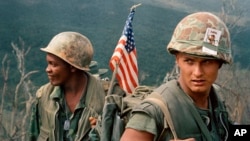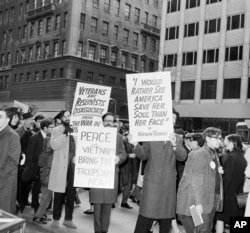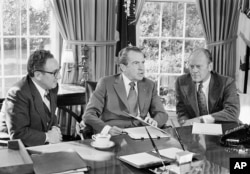On this day 44 years ago, the last remaining American combat troops pulled out of Vietnam, ending direct U.S. military involvement in the war following the signing of a peace accord.
Two months earlier in Paris, representatives of the United States, North and South Vietnam, and the Vietcong signed the accord, designed to allow Americans to withdraw “honorably” from the war, which killed more than 58,000 Americans and deeply divided the country.
Its key provisions included a cease-fire throughout Vietnam, the withdrawal of U.S. forces, the release of prisoners of war, and the reunification of North and South Vietnam through peaceful means. The South Vietnamese government was to remain in place until new elections were held, and North Vietnamese forces in the South were not to advance farther, nor be reinforced.
An exit strategy had been in place since 1969, President Richard Nixon’s famed “Vietnamization” policy, which he unveiled in a televised address to the nation.
As the last American commander in Vietnam left, a force of 7,200 American civilians employed by the U.S. Department of Defense stayed behind to aid the South Vietnamese in their continuing battle with the Communist government in the North.
The war spanned three American presidencies, starting with President John F. Kennedy, who first sent military advisors to aid the South Vietnamese, through the administration of President Lyndon Johnson, when American troop casualties spiked and the war became increasingly unpopular under the direction of then Secretary of Defense Robert S. McNamara, all the way to the Nixon presidency.
President Nixon was accused of — and repeatedly denied — sabotaging Johnson’s efforts to end the war in 1968. Just last year, notes from H.R. Haldeman, Nixon’s closest aide, revealed that the president in fact directed his campaign efforts to scuttle peace talks over fears it might grant his opponent, Vice President Hubert H. Humphrey, an edge in the 1968 election.
In Vietnam, the peace deal quickly fell apart. Even before the last American troops departed on March 29, the communists violated the cease-fire, and by early 1974 full-scale war had resumed.
At the end of 1974, South Vietnamese authorities reported that 80,000 of their soldiers and civilians had been killed in fighting, making that year the war’s deadliest.
On April 30, 1975, the last few Americans still in South Vietnam were airlifted out of the country as Saigon fell to communist forces.












